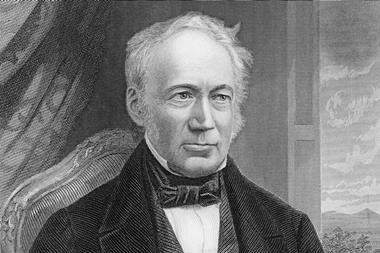Your views on elections, inventions and factorial experiments
Experimental error
I read the article ‘Smart trial and error for rapid innovation’ (Chemistry World, March 2020, p5) with much interest and am surprised that chemists involved in experimental work are still reluctant to move on from changing one factor at a time.
In the 1960s I was encouraged by a mathematician and a statistician to use factorially designed experiments involving changing several factors at a time to account for interactions. The practical work immediately became much more interesting and gave more valuable results than those obtainable by the ‘change one factor at a time’ method. The mathematics is not difficult but seemingly still stops chemists changing their ways. At about the same time cumulative sum techniques were also introduced for detecting changes in the average level of a sequence of figures, determining the point of onset of such changes, obtaining a reliable estimate of the current average value and making short term predictions of the future average level. A most useful investigative and reliable tool.
The Royal Institute of Chemistry organised a summer school in the quantitative treatment of experimental data in chemistry in 1971, which covered the scope of statistics, various statistical tests, cumulative sum techniques and the design of experiments. This last topic included a factorial experiment with replication and three factors, each at two levels.
Nowadays, with the much greater use of computers the mathematical calculations would be even easier. Enter the results into a program and job done. After 60 years I find it difficult to believe that these statistically based methods are not in common use.
J A Reader FRSC
Via email
An inventive business
It is essential for countries to have businesses that are patent-based to increase standards of living. Yet the ‘employee inventor’ status (Chemistry World, February 2020, p4) in the UK demeans and devalues professional scientists. If employers have not remunerated employees properly for devising game-changing product categories that enable wealthy, exclusive, international businesses, the law makes it almost impossible for them to sue for compensation.
By contrast, under the US constitution an inventor is always the first owner of the invention and holds the only key to releasing the industrial value. Thus, US companies can only buy the title to a patent from the scientist or license the scientist’s rights; organisations and scientists therefore enter contracts. It is a much better approach, based on mutual respect and with extensive legal precedents, unlike employee inventorship law.
Scientists can and should invent, particularly when self-isolating due to Covid-19 lockdowns. With successful, independent product research, they can potentially start new patent-based businesses, sell the patents or license out the patent rights, and generate new income.
A change in International Financial Reporting Standard IAS 38 for companies is also urgently needed to separate the expenses of industrial research (that leads to the creation of patent-based businesses) from everyday product and process development and from any routine academic work. At present, many companies report research and development expenses, thus implying that they engage in research despite their spending being entirely on developing low value generics. Shockingly, their patent cupboards are empty. They have nothing new and technically exclusive to offer, just the technically dated. Many fail and wonder why.
The Royal Society of Chemistry would do well to immediately champion these changes: economies will need new, very high value businesses to recover from the financial cost of Covid-19. What’s not to like?
G L Walker FRSC CSci CChem
Hedgerley, UK
Reduce, reuse, condense
Lauren Taylor wrote about the wastage of water and risk of flooding when Liebig condensers are left running overnight (Chemistry World, March 2020, p72). I was prompted to seek a solution far back in the 1970s,1 more by the fear of flooding than by a concern for water conservation, I confess. I have no pecuniary interest in the resultant product, the patent having expired long ago, but I like to dream that it still might largely displace the Liebig condenser and be my claim to fame.
The cooling water for the condenser circulates by convection through a heat sink of the type designed for large transistors. It was originally sold by Jencons as the Airflux condenser and subsequently by Sigma-Aldrich. Although I was motivated by the need for a trustworthy condenser, Jencons marketed it as a water-saving device. The typical response from a chemist then was ‘water is not part of our department budget’, but attitudes are changing.
The Airflux condenser is now marked as discontinued on the Sigma-Aldrich website. Anybody could manufacture the device, or perhaps Sigma-Aldrich would respond to a clamour of enquiries.
Philip Judson, FRSC
Harrogate, UK
Reference
1 P N Judson, UK patent application GB5224476A, 1976; UK patent GB1588119A, 1981
Elect a chemist
I suspect I am not the only reader of Chemistry World who winces every time a politician talks about R&D, particularly product development. They clearly do not know what they are talking about. The reason is obvious – none of them have done any scientific research.
Anyone who has done any product development is likely to have reached the point with a project where it turns out it cannot be done. Unfortunately, politicians are making policies that depend on products that do not yet exist.
There is a cure for this. The American Chemical Society has a policy of encouraging chemists to stand for elected office. If the RSC had a similar policy, it is my opinion that the country would be better governed and chemistry would be held in higher respect.
Bill Edwards FRSC CChem
Braintree, UK
Correction
The alkyl side chain on vitamin E has the formula C16H33, not C16H34 as given in the figure of a recent article (Chemistry World, February 2020, p14). Thank you to John Sloman for bringing this to our attention.












No comments yet